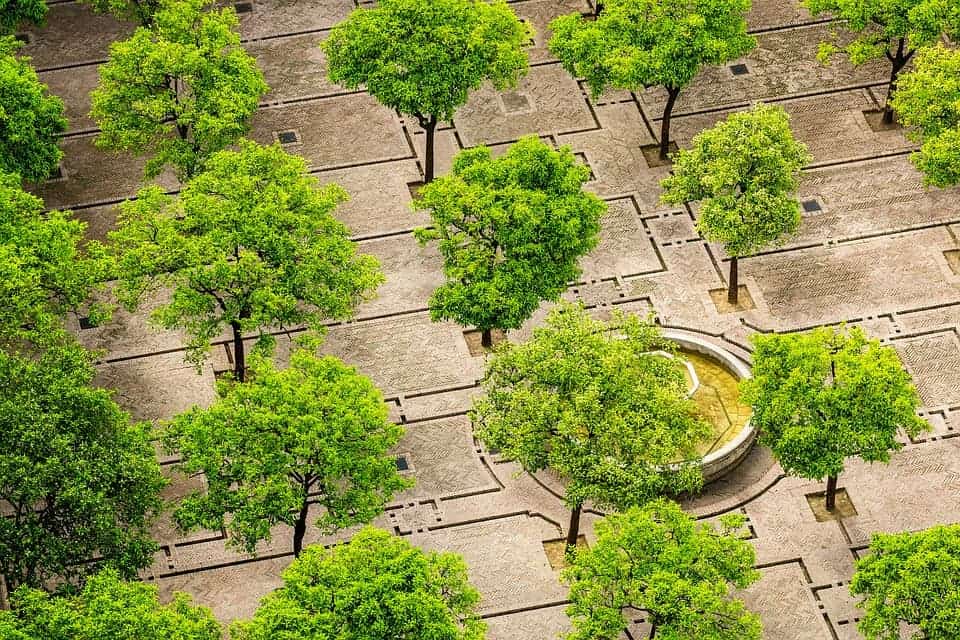Megacities gain some US$500 million in services from trees each year, a new paper reports. That sum could potentially be increased by up to 85%, simply by planting more trees, the researchers add.

Trees are good business for cities. They filter air and water pollutants and supply other critters that maintain city ecosystems with room and board. An international team of researchers wanted to quantify how these services translated to avoided costs in the world’s ten largest megacities, which house nearly 10% of the world population. Even better, they also report that these cities can increase that sum by around 85% simply by planting more trees.
Trees — they keep cities running
Trees underpin urban ecosystems and have an annual median value of US$ 505 million, the team reports, equivalent to saving $1.2 million with every square kilometer of trees planted. Crunch those numbers down and it means that everybody living in such a city would have to pay an average of $35 per year for these ecological services if the trees weren’t there, the team estimates. It doesn’t sound like a lot on on a per capita basis, but seeing as a ‘megacity’ is defined as housing in excess of ten million people, that adds up to a huge pile of money overall.
So how can a tree help people save money? We all know they help improve air quality by scrubbing CO2, but they also perform a wide range of often-overlooked services which play a direct role in making our cities livable. For example, their leaves filter harmful airborne particles out of the atmosphere — something your lungs are definitely thankful for. Everybody’s scrambling for the shade they provide during a heatwave, but trees further help mitigate warm weather by transpiring water vapor. Their shade helps keep buildings and pavement cool (meaning lower costs on air conditioning and more comfortable walks outside), prevent soil erosion, and mitigate runoff during storms.
In other words, trees are really good news for cities and the people living there. In their absence, we’d have to find (and pay for) alternate ways to provide these services in our cities or risk them becoming unlivable expanses of concrete. And the simplest way to save even more, according to Dr. Theodore Endreny of the College of Environmental Science and Forestry (ESF) in Syracuse, New York, the study’s lead author, is to plant even more of them.
“Megacities can increase these benefits on average by 85 percent,” Endreny said. “If trees were to be established throughout their potential cover area, they would serve to filter air and water pollutants and reduce building energy use, and improve human well-being while providing habitat and resources for other species in the urban area.”

Image credits Timofey Iasinskii.
To reach the figures reported on in this study, the team estimated existing and potential tree cover in each city and compared that to the ecosystem services the plants provide. Their analysis spanned 10 megacity metropolitan areas across different biomes over five continents. The cities used in the study were Beijing, Buenos Aires, Cairo, Istanbul, London, Los Angeles, Mexico City, Moscow, Mumbai, and Tokyo. As far as ecosystem services are concerned, the team estimated the benefits trees bring to the table in reducing air and water pollution, their effect in mitigating runoff from precipitation, absorption of carbon emissions, and finally building heating and cooling energy savings associated with the plants — both indirect, such as shade, and indirect such as transpiration which helps take the edge off during heatwaves.
“Placing these results on the larger scale of socio-economic systems makes evident to what extent nature supports our individual and community well-being by providing ecosystem services for free,” said Professor Sergio Ulgiati of University Parthenope of Naples, co-author of the paper.
“A deeper awareness of the economic value of free services provided by nature may increase our willingness to invest efforts and resources into natural capital conservation and correct exploitation, so that societal wealth, economic stability and well-being would also increase.
While the sum smaller settlements save on trees is likely smaller, they also house fewer people, meaning that the per capita figures reported by the team probably aren’t that different for smaller towns or cities. And, given the looming threat of climate change and deadly heat waves in both Europe and the United States, trees might be the last line of defense in keeping our cities — if not pleasant — at least habitable.
Practical reasoning notwithstanding, I think we can all agree that cities simply feel better when they’re full of greenery. Plus, we can turn their hand (branches? roots?) and erect some strikingly awesome elf-like architecture — or chic residences. Ample reasons to plant them as often as we can.
The paper “Implementing and managing urban forests: A much needed conservation strategy to increase ecosystem services and urban wellbeing” has been published in the journal Ecological Modelling.






